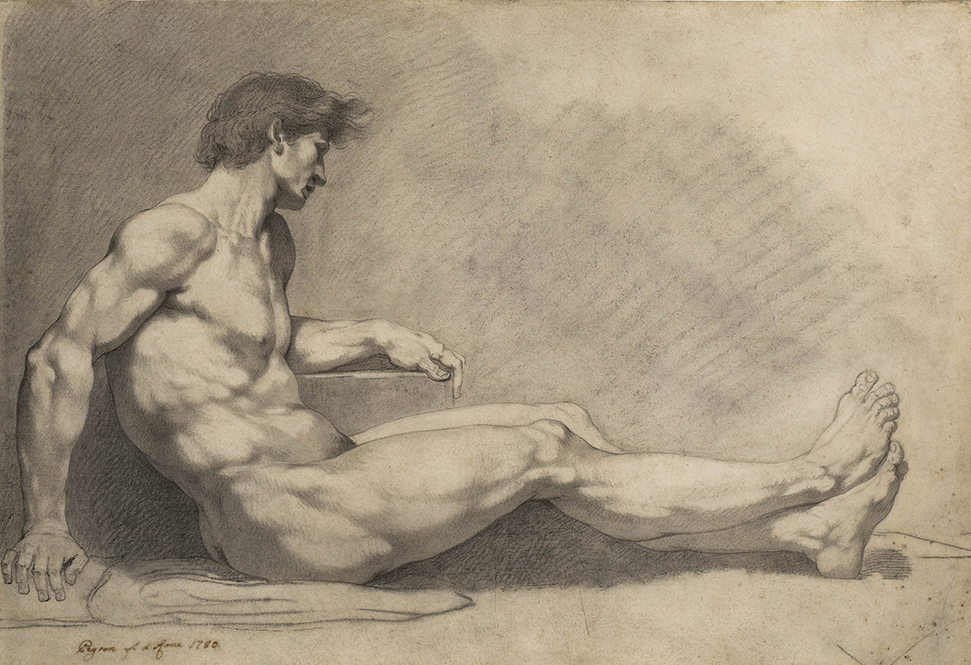Amalia Pica: Drawn to Explain
Ongoing Exhibitions

This work of art on the Craige Parking Deck façade at the University of North Carolina at Chapel Hill is based on diagrams used in the production, recording, and transmission of knowledge on campus. They were suggested by faculty, students, and staff during interviews with Amalia Pica primarily in Spring 2019 about the roles of images in learning. In the words of the artist, the work shows “a collaborative network of different bits of knowledge and pieces of information, ultimately standing as a metaphor for the exchange opportunities and dialogue that the University of North Carolina at Chapel Hill allows.”
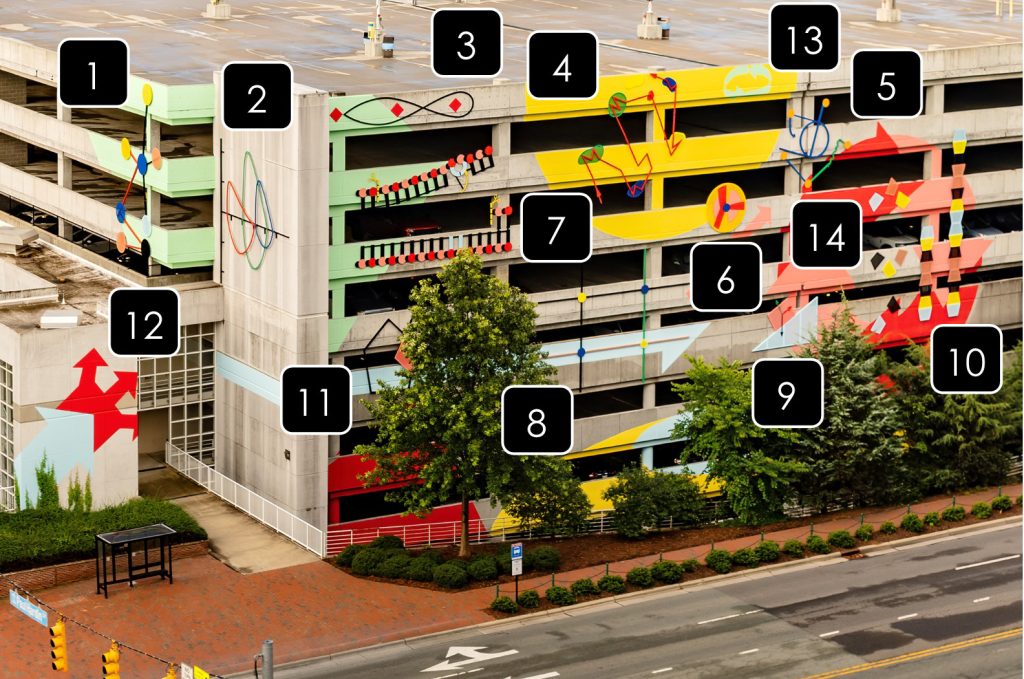
Key
Some of the elements in Drawn to Explain, such as arrows and geometric forms, are derived from generic diagrams and shapes common to visual presentations used in teaching. Others, as described here, are based on sometimes very specific source diagrams from a wide variety of fields.
1
The source diagram was a generic representation of a network with nodes in which the distribution of links is uneven (a few nodes have many links, the majority have very few).
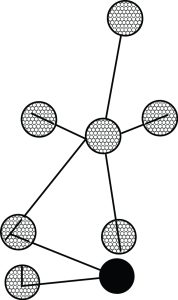
2
This element derives from a chart showing flow volume loops: the changes in lung volume and airflow during the respiratory cycle. The central curve represents the normal situation, with obstructive lung disease indicated at left and restrictive at right.

3
The source diagram shows the movements of one dancer (the woman) around others in the dance “Hey on your own side,” as recorded in Thomas Wilson’s The Complete System of English Country Dancing (London, 1820) found in the University’s Rare Book Collection.
![]()
4
In his 1981 ethnography of the Muskrat Dam Lake First Nation in Ontario, Canada, Bruce Winterhalder, who taught at UNC-Chapel Hill from 1979 to 2002, describes alternative strategies for foraging among various habitat types. The source diagram shows the movement in an environment with patchy resources.
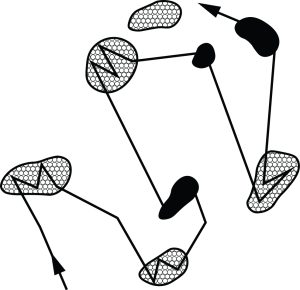
5
The “Four Corners Offense” diagrammed here is a basketball strategy to retain control of the ball and protect a lead, a tactic popularized in the early 1960s by long-time UNC-Chapel Hill coach Dean Smith (1931–2015).

6
This element is based on the “sector model“ of urban land use, as proposed in 1939 in a Federal Housing Administration publication by Homer Hoyt (1895-1984), who was a pioneer in the use of maps for public policy analysis, taught at UNC-Chapel Hill in the 1920s, and provided the data and analysis that underlay the government’s use of mortgage policy to maintain racial segregation (“redlining”).
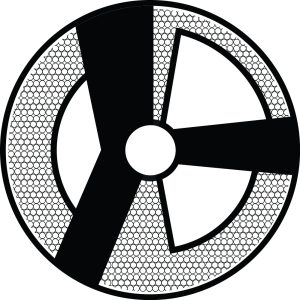
7
The diagram on which this is based appears on the Royal Swedish Academy of Sciences poster explaining the work of UNC-Chapel Hill professor Aziz Sancar that earned him the 2015 Nobel Prize in Chemistry. It illustrates a stage in how cells can repair damage to DNA caused by ultraviolet light. The repair enzyme is shown excising the damaged DNA strand prior to the filling and sealing of the gap.
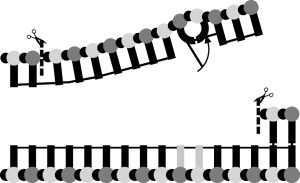
8
The “rule of thirds” is a guide for composing effective photographs, based on the idea that a visually interesting image is created by placing the subject at one of the four intersections of an imaginary grid that divides an image horizontally and vertically into thirds.

9
This derives from a foundational diagram in physics, describing the forces acting on an object isolated for study (“free body diagram”). The arrows describe the weight of the box, the force of the ramp parallel to the slope, and the friction force of the box on the ramp.
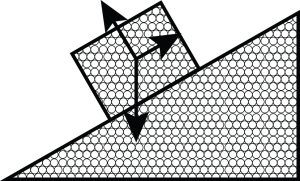
10
Septins are proteins that can align to form scaffolds (to guide the location of other proteins in the cell) and barriers (to prevent movement of molecules from one part of the cell to another). The source diagram illustrates septins in both disconnected and assembled states.

11
This shape derives from an illustration for an assignment in the Mini-Mental State Examination, which asks the patient to copy exactly two intersecting pentagons with 1-inch sides, drawn on a clean piece of paper. The added shading also makes the figure into a kind of Venn diagram, which is used to highlight the overlap between two different data sets.
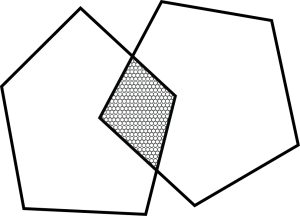
12
The source diagram comes from UNC-Chapel Hill professor Kim Strom’s lecture about social work licensure (the big arrow) and the components that make it up (the smaller arrows): education, exam, and experience.
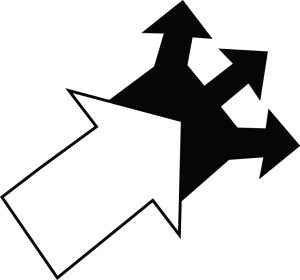
13
The complete source diagram, which includes vertical as well as circling arrows, illustrates the sequence that begins with diagnosing a patient and selecting a medication, giving the medication according to clinical guidelines, and monitoring it. This is followed by iterative assessments and the development of an individualized dosing regimen.

14
The original diagram is an illustration of the Health Communication Program cycle, as illustrated in a U.S. Department of Health and Human Services book. The stages are: planning and strategy development; developing and pretesting concepts, messages, and materials; assessing effectiveness; and making refinements.

Campus Collaborators in 2019 and 2023
Jonathan Abramowitz, Clinical Psychology
Allen Anderson, Music
Anna Bardone-Cone, Psychology and Neuroscience
Misha Becker, Linguistics
Luc Bovens, Philosophy
Bill Brown, Communication
Jennifer Coggins, University Archives
Drew Coleman, Geological Sciences
Rudi Colloredo-Mansfeld, Anthropology
Erin Dickey, Art and Art History
Spencer Dorn, Medicine
Joaquín Drut, Physics and Astronomy
Maxine Eichner, Law
William Ferris, History
Gregory Flaxman, English and Comparative Literature
Haley France, Media and Journalism
Amy Gladfelter, Biology
Banu Gökarıksel, Geography
Benny Joyner, Jr., Pediatrics
Mark Katz, Music
Joel Kingsolver, Biology
Daniel Kreiss, Media and Journalism
Michael Lambert, African, African American, and Diaspora Studies
Doug Lauen, Public Policy
Cal Lee, Information and Library Science
Cary Levine, Art and Art History
Carol Magee, Art and Art History
Beth Mayer-Davis, Nutrition
Brent McKee, Marine Sciences
Laurie McNeil, Physics and Astronomy
Eric Muller, Law
Mai Nguyen, City and Regional Planning
Seth Noar, Media and Journalism
Todd Ramón Ochoa, Religious Studies
Leslie Parise, Biochemistry and Biophysics
Keith Payne, Psychology and Neuroscience
Juanita Paz-Chalacha, Anthropology
Lisa Pearce, Sociology
Andrew Perrin, Sociology
Adam Persky, Pharmacy
Aziz Sancar, Biochemistry and Biophysics
Jeff Sekelsky, Biology
Ted Shaw, Law
Montek Singh, Computer Science
Kim Strom, Social Work
Adam Versényi, Dramatic Art
Steve Weiss, Southern Folklife Collection
Brett Whalen, History
Alice Whiteside, Sloane Art Library
Jessica Zègre-Hemsey, Nursing
Special thanks to Alison Friedman, Emil Kang, Cheryl Stout, Kathryn Wagner, Anna Wu, and Evan Yassky.
Exhibition-Related Events and Public Programs
Public Celebration of Drawn to Explain
Wednesday, September 20, 2023 | 11 a.m.
Internationally renowned artist Amalia Pica comes to Chapel Hill to celebrate the completion of a large-scale mixed media art installation, Drawn to Explain, on the exterior of Craige Parking Deck on the University of North Carolina at Chapel Hill’s campus. The work uses powder-coated aluminum elements and paint on concrete to reflect diagrams from different disciplines and departments across the University, conveying the sense of discovery at Carolina. Pica will be the featured speaker at the event.
Artist Talk
Thursday, September 21, 2023 | 6 p.m.
Join us for an artist talk with Amalia Pica, internationally renowned London-based Argentinian artist whose major commissioned installation Drawn to Explain has just been completed at the Craige Parking Deck on UNC’s campus. Pica will discuss how this very large-scale, multifaceted work fits within her broader body of work, which often explores systems of communication and human understanding in a playful, engaging way. Space is limited; please register for a free ticket here.
This talk has been made possible by a generous gift from Carol Cole Levin.
Image credits:
The Craige Parking Deck is adorned with an art installation titled Drawn To Explain by artist Amalia Pica on September 19, 2023, on the campus of the University of North Carolina at Chapel Hill. (Jon Gardiner/UNC-Chapel Hill)
Photograph of an art installation titled Drawn To Explain by artist Amalia Pica, with interpretive numbers added by the Ackland Art Museum. (Johnny Andrews/UNC-Chapel Hill)
Amalia Pica, Argentinian, works in London, born 1978, Drawn to Explain, 2019-23, paint and powder-coated aluminum on concrete, Ackland Art Museum, Commissioned by Arts Everywhere with the support of the Office of the Chancellor, the Department of Transportation and Parking, the Carol L. Folt Fund for the Arts, Mr. and Mrs. Richard Lockwood, Jr., James Keith Brown ’84 and Eric Diefenbach, Ackland Fund, and John A. Powell ’77, 2023.12. © 2023 Amalia Pica

